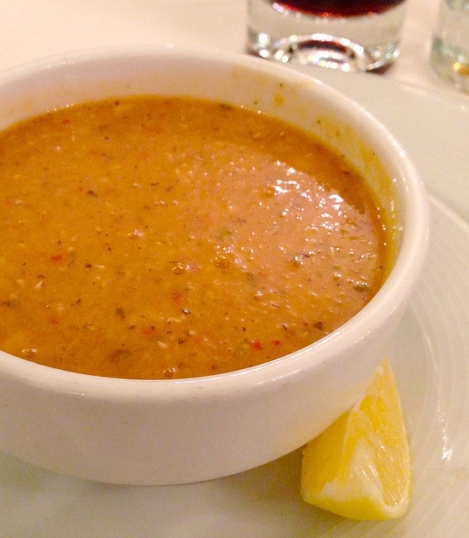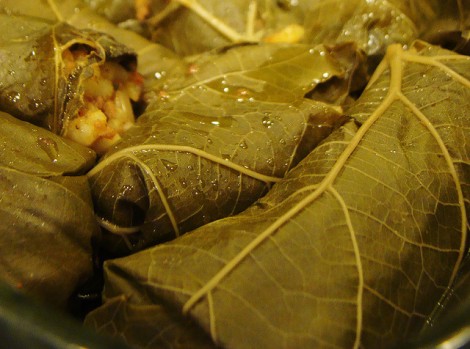I turn this dripping sweet upside down and place it in my mouth. With a sound of crunch, as the top of the pastry crumbles over my teeth, the heavenly baklava melts in the palate. An invincible mixture of its butter and sugar syrup takes over and it seems like I’m experiencing the whole of Turkey and its Ottoman cuisine all over again, albeit sitting miles away in Mumbai, in this single piece of Baklava sourced from Istanbul.

I have a great urge to start this food trip description with Gaziantep, for it is from there, that the greatest of Turkish baklava makers originated, even those who are today known as the best in Istanbul, and still reside. However, I must resist, for good food has the power to sway our senses far far away. And so, I’d rather stick to tradition here and start where we should, breakfast.
Van
Fly to the far East in Turkey, stopping only miles short of the border with Iran. Van, the beautiful city situated besides a lake of the same name, has distinguished itself, not just in being the center of the Kurdish populace but also in having a breakfast culture of its own. Choose the Kahvalti Salonu (breakfast salon) in the morning and leave exploring the vistas of the city to the day. And with that, dawns the realization that breakfast, in Turkey is an elaborate affair, more like an occasion for the family to sit together and eat. With different varieties of cheese, including ‘peynir‘, olives (both black and green), kaymak (Turkish version of clotted cream), cacik (similar to Indian raita) with bread, honey, salads, fruits and even dry fruits, the Turkish breakfast ensures a wonderful start to a day of exploration of the old towns; needless to mention the ubiquitous ‘cay‘ (tea) to lend further zest to the morning.
Turkish breakfast by Pocket Cultures
A quick thought for vegetarians though, Kahvalti may typically consist of a few meat items as well. In that case you can try telling them ‘Ben bir vejetaryen’ which translates to ‘I am vegetarian’ or also try ‘Tavuk, et ve balik yemem’. (Tavuk, Et, and balik are Turkish for chicken, meat & fish respectively, ‘yemem’ for ‘I do not eat’. Beware though, saying ‘yemek’ instead of yemem can mean ‘I eat’!)
Goreme

Goreme from a hot air balloon flight
From the far east, head to the interiors, and probe the heart of Turkey a little. Land at Kayseri and change some buses to reach Goreme, where the valleys and caves have preserved more than just a landscape. And while you move from one cave city to another within Goreme, step into one of the restaurants to have the humongous lentil burger. A scrumptious one with a patty of lentils at its core, adorned with some onions and other leafy vegetables, it is a perfect meal to bring your craving for ‘local’ vegetarian food to a halt. And the Lentil soup, as the name suggests, is vegetarian to the extent of being almost identical to the Indian Dal. At those times when you really can’t think of much at a Turkish eat out, just order a bowl of this soup and some rice, and you’ll be alive and kicking again to explore the next cave city (Yes, there are more than one of them). At night, get drunk on some Cappadocian wine, unless you have a hot air balloon flight the next morning, in which case you really wouldn’t want to be hung-over (literally!).

Red lentil and bulgur soup by LWY
Anatolia

The lagoon at Oludeniz
A trip to Turkey would be rather incomplete without a visit to one of its several pristine beaches, the colour of whose waters gave modern vocabulary the word ‘Turquoise’. From Goreme, head west in a bus to Oludeniz. But break in between. For it’s in Anatolia that some wonderful Turkish foods are to be found. To believe me, try the Testi kebabs – cracker of a dish from central Anatolia. The vegetables are slow cooked in a sealed clay pot to prepare a hot stew, which is then eaten with rice and some salad. But the delight of the dish lies in the way it’s served – cracked open with a hammer in front of the eater! Definitely calls for an experience. Doesn’t it?

Pottery kebabs by albertjyi
And meanwhile, at all those places your bus stops, feast your way to some Gozleme, Turkish handmade pastry, much akin to the Indian ‘Paratha‘ and have it with Ayran, thick butter milk with lots of froth dangling over your glass. There are Gozleme varieties galore for vegetarians, Spinach Gozleme, Peynir Gozleme, Spinach & Peynir Gozleme, Potato Gozleme (yes that almost amounts to saying Aloo Paratha) or all of them. But decide soon among them because, my friend, there’s a bus to hop back on to! Did warn you, good food can sway your senses away.
Selcuk

Step into one of the quaint alleys in Selcuk
Once you have soaked into the sun on the most fabulous beaches in Oludeniz, near Fethiye, head a little north along the coast. Cross over from Aydin to Selcuk. You are closer to Greece than ever before, geographically and may be, just maybe, culturally. And so, even though these may not be a Selcuk speciality per se, try the Yaprak Dolma – Stuffed grape leaves, which have been signature Mediterranean food for years. Annia Ciezaldo in her book ‘Day of Honey’ calls the dolma, a narrative dish, like short stories, where each ingredient speaks as the package unfolds. The good part is, dolmas are usually vegetarian, with a stuffing of rice inside grape leaves (their non-vegetarian cousin is usually called ‘Sarma‘). There are other dolmas as well, basically stuffed vegetables. They’ll make for a good change in taste, and a good conversation, as you open each leaf and devour the stuffing inside. After all, they are a narrative dish :)

Dolma by Vegan Feast Catering
Gaziantep
Now, I want to you to take several steps back, closer to the border with Syria. Fret not; it’ll be worth the effort since we are talking about the most important part of the meal, the dessert. And for that we’re heading to the birth place of the Turkish Baklava, Gaziantep (or just Antep). It’s said that the baklava of Gaziantep is impossible to make anywhere else owing to the weather conditions and the nuts found there. Layers of filo pastry with multiple layers of nuts in between, dripping with syrup, ready to melt in your mouth, the moment you eat. Baklava, for any food lover, is a journey in time and space alike, with its varieties (Turkish, Syrian, Iranian, Lebanese and even Greek!), its origins, and the claims laid by different Middle Eastern countries to its origin. (Yes, it is that important a thing!). Though there are several chains in Istanbul selling them, one would do good to eat Baklava from one of the smaller outlets in the other Turkish towns. They are equally lovely and cheaper! (Heck, everything is, outside Istanbul).

Turkish Baklava by Alaskan Dude
And finally, arrive in Istanbul, where the culinary greatness of the entire Turkey flows through the waters of a certain Bosphorus. It is here that the kebaps of Anatolia, its pilaf and its lentil soup, the baklavas of Antep and the legends of its Ustas, the leaves of Dolmas and the tales of the Mediterranean that they behold, the Turkish coffee and the fortunes of the future, the coffee houses and the stories of the past, the Dondurma ice cream of Maras and the tantrums of its sellers, the breakfast salons of Van and their inherent diversity, all come together to make Turk Mutfagi what it is today!

The Bosphorus from the walls of the Topkapi Palace

——————————————————————————————————-
Have you been to Turkey? Share your impressions of the food there.
![]()








